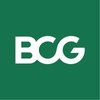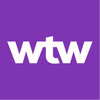
i
Deloitte
Proud winner of ABECA 2024 - AmbitionBox Employee Choice Awards
Filter interviews by
Deloitte Management Trainee Interview Questions and Answers
Deloitte Management Trainee Interview Experiences
1 interview found
Interview Questionnaire
1 Question
- Q1. Latest Amendments
Interview Preparation Tips
Interview questions from similar companies

Interview Questionnaire
1 Question
- Q1. Tell me about yourself, technical questions about the mentioned skills in your resume and a few question general questions like where do you see yourself in 2 years and what are your plans for higher studi...

I applied via Recruitment Consultant and was interviewed in Mar 2021. There were 4 interview rounds.
Interview Questionnaire
2 Questions
- Q1. Why do you want to change Current job?
- Q2. Some technical questions- do you know capital budgeting?
Interview Preparation Tips

Interview Questionnaire
1 Question
- Q1. What is java bean class, singleton class
- Ans.
Java bean class is a reusable software component and singleton class restricts the instantiation of a class to one object.
Java bean class is a POJO (Plain Old Java Object) that encapsulates many objects into a single object for easy access.
It follows a naming convention where the class name starts with a capital letter and has a public default constructor.
Singleton class is a design pattern that ensures only one instan...
Interview Preparation Tips
Skills evaluated in this interview

Interview Questionnaire
1 Question
- Q1. Tell me about yourself

I applied via Recruitment Consultant and was interviewed before Oct 2020. There were 3 interview rounds.
Interview Questionnaire
2 Questions
- Q1. Business processes
- Q2. Strong behavioral Competency
Interview Preparation Tips

I applied via Naukri.com and was interviewed in Jun 2021. There was 1 interview round.
Interview Questionnaire
1 Question
- Q1. PROCESS OF INTERNAL AUDIT
- Ans.
Internal audit is a systematic and independent examination of a company's financial and operational activities.
Internal audit is conducted by an independent team within the organization.
The team evaluates the effectiveness of internal controls, risk management, and governance processes.
The audit process involves planning, fieldwork, reporting, and follow-up.
The team identifies areas of improvement and provides recommen...
Interview Preparation Tips

Interview Questionnaire
2 Questions
- Q1. In the technical round, I was asked to write Sql Query , then questions related to the projects from my CV
- Q2. Questions from Python

I applied via Company Website and was interviewed in Mar 2021. There was 1 interview round.
Interview Questionnaire
1 Question
- Q1. Basic about Derivative products relevant to profile
Interview Preparation Tips

I applied via Company Website and was interviewed in Jan 2021. There were 3 interview rounds.
Interview Questionnaire
2 Questions
- Q1. Where is the residence, how will you commute
- Q2. What is internal audit? What is pivot table, how to use vlookup. What is ptp process.
- Ans.
Internal audit is an independent, objective assurance and consulting activity designed to add value and improve an organization's operations.
Internal audit evaluates the effectiveness of an organization's risk management, control, and governance processes.
Pivot table is a data summarization tool used in spreadsheet programs like Excel. It allows you to quickly summarize and analyze large amounts of data.
VLOOKUP is a fu...
Interview Preparation Tips
Tell us how to improve this page.
Deloitte Interviews By Designations
- Deloitte Consultant Interview Questions
- Deloitte Analyst Interview Questions
- Deloitte Senior Consultant Interview Questions
- Deloitte Assistant Manager Interview Questions
- Deloitte Associate Analyst Interview Questions
- Deloitte Tax Consultant Interview Questions
- Deloitte Business Analyst Interview Questions
- Deloitte Data Analyst Interview Questions
- Show more
Interview Questions for Popular Designations
- Sales Management Trainee Interview Questions
- Management Trainee Marketing Interview Questions
- Product Management Trainee Interview Questions
- Management Staff Interview Questions
- Construction Management Interview Questions
- Management Executive Interview Questions
- Management Consultant Interview Questions
- Management Trainee - Technical Interview Questions
- Show more
Interview Questions from Similar Companies
Fast track your campus placements
Deloitte Management Trainee Reviews and Ratings
based on 8 reviews
Rating in categories
|
Consultant
34.6k
salaries
| ₹6.4 L/yr - ₹28 L/yr |
|
Senior Consultant
21.9k
salaries
| ₹11 L/yr - ₹42 L/yr |
|
Analyst
14.8k
salaries
| ₹3.7 L/yr - ₹12.5 L/yr |
|
Assistant Manager
10.3k
salaries
| ₹7.8 L/yr - ₹24 L/yr |
|
Manager
7.2k
salaries
| ₹16 L/yr - ₹52 L/yr |

Accenture

PwC

Ernst & Young

Cognizant
- Home >
- Interviews >
- Deloitte Interview Questions >
- Deloitte Management Trainee Interview Questions





















